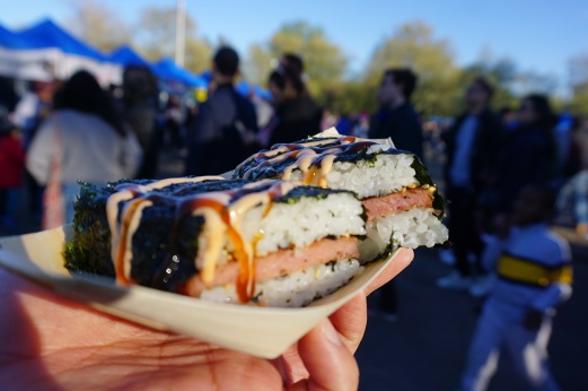
From a historic inn brimming with Filipino hospitality to a museum focused on the Chinese American story, New York State is ripe with opportunities to immerse yourself in history and culture during Asian American and Pacific Islander Heritage Month. Here are some great places to visit in New York State and the incredible people behind the scenes sharing their culture and heritage through enlightening and enriching experiences.
Updated 04/19/2024
Paolo Garcia Mendoza, chef and owner, Karenderya (Hudson Valley)
Growing up, Chef Paolo Garcia Mendoza, who was born in the Philippines and moved to Brooklyn at the age of 15, was lured into the kitchen by the aromas of his mother’s Southeast Asian cooking. “I would ask her questions, and she would show step-by-step how to make the dishes,” Mendoza said. His love for cooking led to an impressive career spanning over 20 years in the restaurant industry, which included working in the kitchens of some of the country’s most well-known chefs and restaurateurs including Floyd Cardoz and Geoffrey Zakarian. In 2017, Chef Mendoza opened Karenderya, a casual Nyack restaurant inspired by the roadside eateries of the Philippines where he blends the flavors of his childhood with modern takes on Southeast Asian cuisine. “I wanted to open up a place that is casual and family-friendly, but with good food,” he said. The restaurant quickly gained acclaim, being named one of America’s best new restaurants in 2018 by Esquire and Mendoza became the 2023 James Beard Award semifinalist for Best Chef.
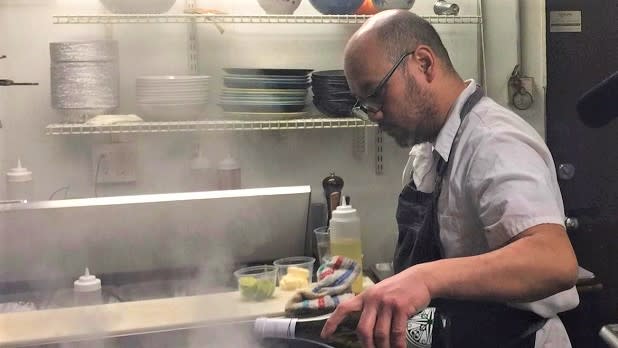
Credit: Cheryl Baun
The relaxed space is as warm and welcoming as Chef Menodza and his wife, who co-owns the restaurant. It’s the perfect setting to relish in the chef’s menu of go-to comfort foods like kare-kare and adobo pork belly. “I try to keep a familiarity with the ingredients whether it’s a dish that is traditional or my own creation,” Mendoza said. “For those familiar with the cuisine, I hope the food will jog memories of food they grew up with. For people who have never had the cuisine before, I hope they learn more about Filipino culture through the food, and that it spurs greater interest in other cultures, too.” When he’s not in the kitchen, Mendoza likes to spend time with his family outdoors in some of their favorite local spots like Rockland Lake State Park, Hook Mountain, and Bear Mountain.
Keith Gulla, co-owner, Landmark Inn (Central New York)

Credit: This Is Cooperstown
On two manicured acres in the historic baseball village of Cooperstown stands the charming Landmark Inn, an 1856 Italianate mansion turned bed and breakfast owned by Keith Gulla and husband John Walker. They turned their dream of owning an inn into reality in 2021 when the pandemic prompted them to reevaluate their priorities. Cooperstown was the natural choice (it’s where Walker was born and raised and where his family still lives). Growing up in Houston’s vibrant Filipino community, Gulla embodies the culture’s concept of “magiliw na pagtanggap,” which translates to “warm welcome.” “It is something that all our guests receive when they arrive at the Landmark Inn,” Gulla said. “Another term that you might hear around the Landmark Inn is mabuhay, which is a greeting to express good wishes. It’s one of the first tagalog words that my husband learned when we first visited the Philippines.”
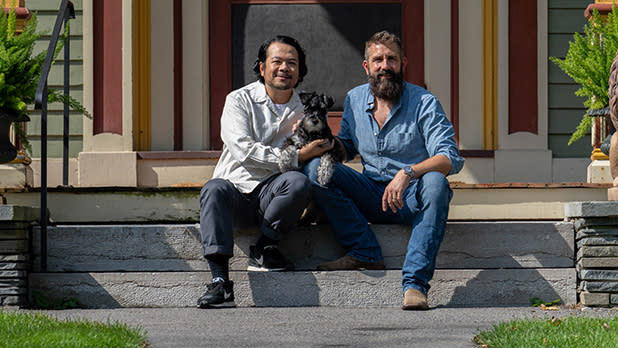
Photo courtesy of Keith Gulla
From the moment you walk into the elegant and well-appointed inn with its tranquil porches and parlor lounge complete with chandelier, you feel like family, overwhelmingly welcomed by staff. Then there’s the food. The Landmark Inn’s breakfast offerings range from savory to sweet to surprising, all served with a side of legendary Filipino style hospitality. “Our goal is to delight our guests every time by providing genuine care, superior comfort and thoughtful experiences from the heart,” Gulla said. All of this combined earned the Landmark Inn TripAdvisor’s coveted Travelers’ Choice Best of the Best award. “It was truly an eye-opener and helped us to realize that we’re doing something right and really making a difference,” Gulla said. He credits his mother as his biggest inspiration and carries her values forward at the inn. “She worked her whole life to make her dreams come true and to provide a good life for my brother and I,” Gulla said. “She taught me the importance of creating my own opportunities and to always give back.” Not only does the inn support local organizations such as the Susquehanna SPCA and Friends of The Village Library, but you’ll often find Gulla at the Cooperstown Farmers’ Market on the weekends buying goods from local farmers, artisans, and small businesses, and dining at his favorite Central New York restaurants.
Mary Joy Lu, CEO and owner, Rail Explorers
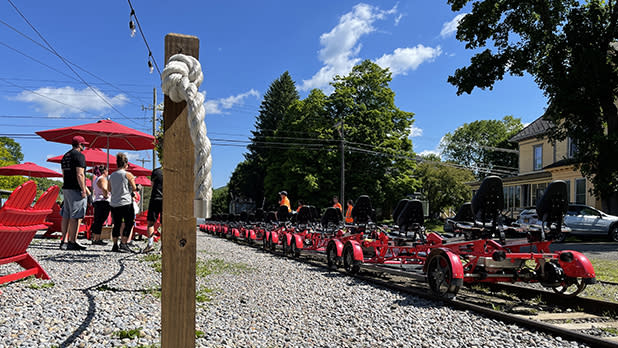
Credit: This Is Cooperstown
Rail Explorers lets you experience the magic of the railroad like never before on a unique pedal-powered rail bike tour of Cooperstown. CEO and co-founder Mary Joy Lu, who is half Chinese and half German, got the inspiration to launch Rail Explorers in an unlikely place. “I’m addicted to Korean dramas and there was this scene where the couple go on a date in the afternoon and they’re somewhere in the countryside and they get on this contraption that was on the railroad and started pedaling away into the sunset and I went, ‘What is this?’” Lu recalled. “I went upstairs and told my husband, ‘This is what we’re going to do, this is our new life.’” They left their careers in advertising and three years later opened up Rail Explorers in the Adirondacks, becoming the first commercial operation to bring leisure rail bikes for the first time to the U.S. While their original location has since shuttered, Rail Explorers can now be found in the Catskills and Cooperstown, as well as several other locations around the country.
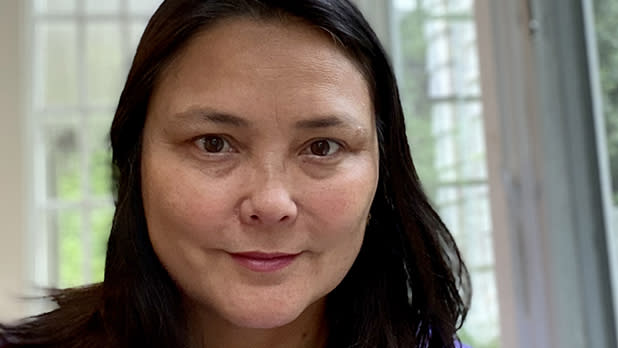
Photo courtesy of Mary Joy Lu
As eager guests arrive just outside the home of the world-famous Baseball Hall of Fame, they’ll be greeted by an old train depot and vintage Cooperstown Charlotte Valley train before hopping on a bright shiny red rail bike for their tour of choice. The Milford Track offers a 16-mile roundtrip journey through farm lands and forests alongside the Susquehanna River and rumbles across historic trestle bridges, while the Charlotte Valley Express takes you on a six-mile roundtrip riverside ride past fields, lakes, and over the majestic 200-foot long Portlandville Trestle. Those concerned about pedaling uphill need not worry as the rail bikes are equipped with an electric assist that makes it feel like “riding through butter.” “It’s just so much fun with the wind in the hair, the sun through the trees, and people just are so happy they always come back with a smile on their face,” Lu said. Passengers can enjoy a riverside picnic or cozy up to a campfire on a fireside tour, and of course, enjoy the golden hour on a sunset ride. Rail Explorers also strives to be inclusive, often working to provide rides for those who have low vision, are Deaf or hard of hearing, or are autistic.
"Kae" Wanthureerat Baramee, chef and owner, Tiny Thai Food Truck (Greater Niagara)
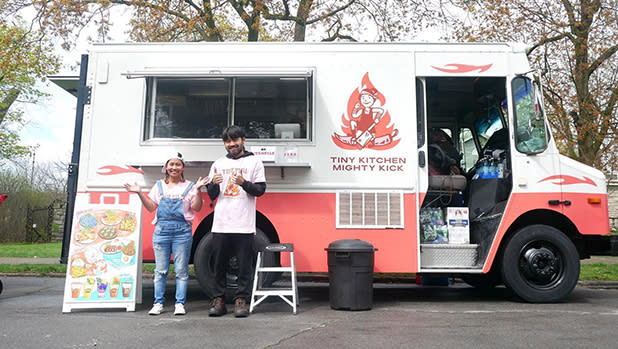
Credit: Marc Moscato
"Kae" Wanthureerat Baramee’s food journey started at the age of 11 cooking with her family in her native Thailand. After moving to the capital city of Bangkok, she worked her way up from server to manager at a big restaurant famous for its Japanese food. Baramee impressed her restaurant colleagues after cooking for a staff party and when people told her she should start her own restaurant, the idea took hold. She left Bangkok with a plan to hone her skills in the U.S., save money, and open her own restaurant. She didn’t expect to fall in love and marry a Buffalo-native, settle here and stay, but that’s exactly what happened after she met her now-husband Marc Moscato, founder of Buffalo Bike Tours.
Launching her business Tiny Thai, a name that is a nod to her petite 4’ 9” frame, she now serves her menu, some of it based on Thai street food, as take out from her kitchen at 27 Chandler Street and from her food truck at Buffalo’s festivals and happenings. “I’m really happy to have people enjoy my food,” Baramee said. “I’m happy to share my story.” Her signature dishes include ramen-style Drunken Noodles, barbecue chicken in curry sauce, Pad Thai and chicken and peanut dumplings with coconut milk. During fall and winter, she offers cooking classes, including dumpling making. She’s even a featured stop on her husband’s Buffalo chicken wing tour, where she serves up samples of her version of an ancient Chinese wing recipe. Written by Michelle Kearns
Lloyd Ligao, founder and head chef, Pinoy Boi (Greater Niagara)
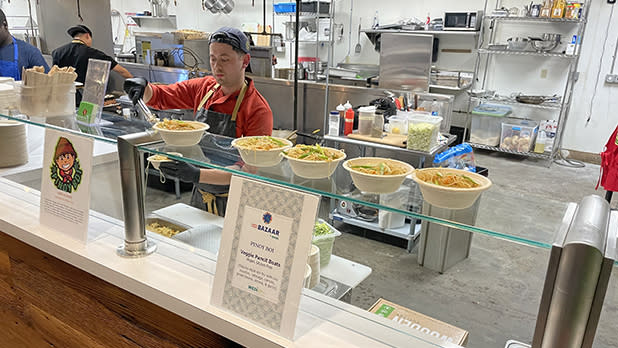

Photo courtesy of Lloyd Ligao
Lloyd Ligao has fond memories of his childhood, growing up in the Philippines in the jungle among farm animals from water buffalo to chickens and pigs. He eventually left that life behind, moving to Buffalo to join his Filipino mother who settled there when he was a boy. He began a restaurant career straight out of high school, working his way up from dish washer to sous chef. When the pandemic hit, Ligao’s job at an Italian restaurant slowed down and he began thinking about what was most dear to him. He realized the country he grew up in and loved was not represented in Buffalo’s food scene: There were no Filipino restaurants. He decided it was time to chart his own course with the cuisine that he missed and loved.
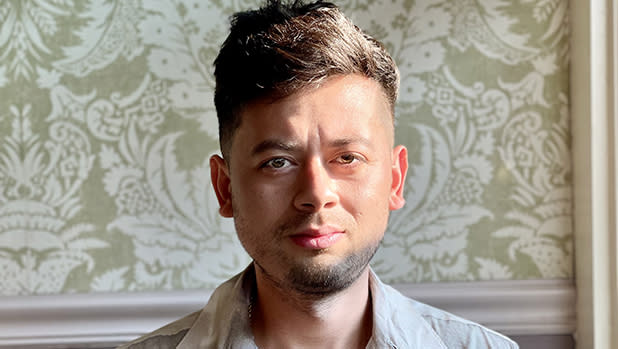
Photo courtesy of Lloyd Ligao
Now his Pinoy Boi, slang for Filipino boy, is among the restaurant kitchens at Downtown Bazaar in Buffalo’s theater district. The small business incubator provides entrepreneurs of all races and ethnicities the opportunity to test retail concepts and learn the fundamentals of running a business. “Looking back, I feel like it was necessary,” Ligao said of his transition to cooking Filipino food. “I am finally cooking something that I enjoy and that I’m just proud of.” Before coming downtown, Ligao developed his menu featuring an airy purple yam cheesecake and fried noodles with carrots and green beans, during two years of serving food at a counter at the Broadway Market. His pork Sisig is one of the most popular entrees. It’s a version of a traditional snack eaten while out drinking with friends: Fried pork, soy sauce, lime, chili and an egg. He serves it with rice and thin beef and cabbage egg rolls. “I am just happy to come to work every day and share this food with Buffalo,” Ligao said. Written by Michelle Kearns
John Wang, founder, Queens Night Market (New York City)

 Credit: Sharon Medina/Queens Night Market
Credit: Sharon Medina/Queens Night Market
Every Saturday, Flushing Meadows Corona Park comes alive with the sights, smells, and sounds of the world at the Queens Night Market. Founder John Wang launched the immensely popular event back in 2014 with the intent of becoming New York City’s most affordable and diverse event serving up international cuisine from as far as Burma and Sierra Leone, representing a total of over 90 countries. “I thought it better be a love letter, an homage to New York City,” Wang said. Instituting a $5/$6 price cap on food and curating vendors based on their cultural and personal stories, the foundation for the Queens Night Market was set. “It’s not about what their food looks like on Instagram,” Wang said. “You have to cook something that you care about personally, but that you also grew up eating. The idea is that it creates personal stories and family histories and cultural histories through the food the vendors offer.”
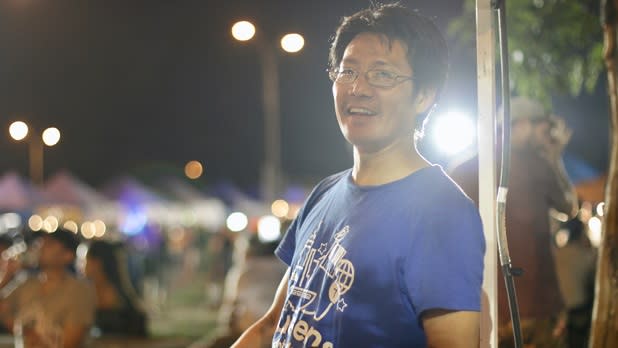
Credit: Storm Garner
Wang was first introduced to night markets in Taiwan, where he spent his summers as a child. “As a kid, it was all I ever wanted to do,” Wang said. “It felt electric, it was cheap, it was fun, but it had people from all over the place and it was an asset to the community.” His future travels would take him to night markets in Vietnam, Hong Kong, Marrakech, and Mexico, just to name a few. The choice for bringing a night market to Queens was not only a practical one (it had the necessary space), but symbolic as well (it hosted two world’s fairs and is also known as The World’s Borough thanks to its cultural diversity). Like the markets that inspired it, vendors at the Queens Night Market serve up a handful of dishes that they’ve perfected, ensuring every bite has something spectacular about it–spectacular enough to earn the Market a spot on the New York Times 100 Best Restaurants in New York City list. In addition to the food, the night market features family-friendly games, artisans, local bands, and performers of every type (African dance troupes, Chinese lion dance, street jugglers, martial arts demonstrations, and more).
Julia Wijesinghe, founder, Sri Lankan Art & Cultural Museum (New York City)
Julia Wijesinghe beams with pride for the two islands that define her. Born and raised on Staten Island, where her parents met on the ferry in a quintessential New York love story, Wijesinghe has spent summers with her grandmother in Sri Lanka, learning all about her culture and heritage. Channeling her father’s entrepreneurial spirit and mission to share Sri Lankan culture through its cuisine at his popular restaurant Lakruwana, a 15-year-old Wijesinghe had a vision to open what is now the Sri Lankan Arts & Cultural Museum. “Being in New York City has been a great opportunity to understand how diversity is important and it’s so nice to see how other cultures celebrate their roots and I wanted to see the same thing in our Sri Lankan community,” Wijesinghe said. She spent three years amassing her collection of religious sculptures, instruments, paintings, gemstones, and other artifacts from the island nation which were then shipped to New York in a 40-foot container.
In 2017, at the age of 18, she opened what became the world’s first Sri Lankan museum outside of Sri Lanka in the basement of her father’s restaurant. A year later, the museum and its collection of 180 artifacts (both original and replicas) moved into its permanent home in a dedicated gallery around the corner. Now 24 and working on her second degree, Wijesinghe continues to run her museum as a one-woman show, providing guests with an intimate tour of the collection exploring Sri Lanka’s rich 5,000 year history (tours are offered 11AM-5PM Sunday by appointment only; $8 admission). “I would give my all to my visitors, not just showing Sri Lankan culture, but wanting to learn from them and their culture,” Wijesinghe said. Among the highlights is an exhibit of a Sri Lankan kitchen with traditional equipment and cooking instruments, authentic bow and arrows from Sri Lanka's indigenous Vedda community, a rare map of Ceylon from 1887, and a standing Buddha donated by her father. If there’s one thing Wijesinghe wants to impart on others it’s never forget your roots. “I feel very passionately, it’s not a business venture, it’s a passion and a goal of mine of wanting to spread Sri Lankan culture among other communities and future generations,” Wijesinghe said.
Herb Hoi Chun Tam, curator and director of exhibitions, Museum of Chinese in America (New York City)
Herb Tam wasn’t trained to be a curator. In fact, he entered the art world as an artist, channeling his feelings spurred by racism he would experience growing up in San Francisco into his work. After moving to New York City, Tam was offered the chance to curate a NoHo storefront which unlocked more opportunities that eventually led to him joining the Museum of Chinese in America as its Curator and Director of Exhibitions. “With MOCA, there is another side to my identity that I didn’t explore before, which is this aspect of a very specific culture that Chinese Americans and Asian Americans have created here, it’s a very specific identity, but it hasn’t really been captured, named, explored, or respected enough even within ourselves,” Tam said.
Tam aims to be expansive and inclusive when developing exhibitions, as evidenced in a 2023 exhibit on Chinese cuisine displayed at MOCA’s satellite location in Flushing, Queens. Tam also strives to explore more of the museum’s growing collection of over 85,000 artifacts, which he calls the “beating heart of MOCA.” MOCA’s main space at 215 Centre Street, on the border of Chinatown and SoHo, features a permanent exhibition exploring the 250 year history of the Chinese American experience and a children’s area on the lower floor where young ones can learn about the customs and traditions of Chinese culture. “Chinese Americans come on a pilgrimage to touch base with their identity and to reflect on their story, hopefully for them it feels like a refuge,” Tam said. “There are other people who might come to the museum who have no knowledge of the history of Chinese immigrating to America, and for them, hopefully, what they get from it is that the stories of Chinese in America are very connected to stories of other groups.”
New York is a great place to celebrate the achievements and contributions of Asian Americans and Pacific Islanders. CLICK HERE to discover more ways to learn about, appreciate, and experience Asian Pacific American culture and history in New York State.
 NEWSLETTER
NEWSLETTER
